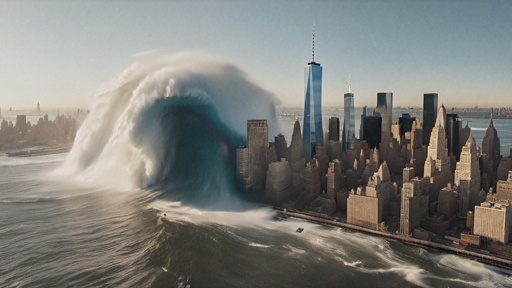Russian President Vladimir Putin has just unveiled a weapon so formidable it threatens to make the concept of “mutually assured destruction” feel obsolete, leaving military strategists and average citizens alike to wonder: what happens when the next arms race isn’t about missiles, but man-made tsunamis?
Putin’s Nuclear Sea Monster: A New Breed of Deterrence
Putin’s confirmation of the Poseidon test comes not as a rogue flex, but as an emphatic statement amid failed peace talks and escalating rhetoric between Moscow and Washington. The Poseidon—a 20-meter, 100-ton, nuclear-powered underwater drone—can reportedly reach speeds of 125 miles per hour and dive to depths of 1,000 meters. Russian claims suggest that not only is Poseidon undetectable by modern sonar, but its nuclear propulsion also allows it to operate at almost limitless range beneath the waves, bypassing every known anti-submarine defense.
https://twitter.com/Alex_Oloyede2/status/1983565858724003845
The Kremlin’s narrative frames the Poseidon as a technological triumph: “When it comes to speed and depth, there is nothing comparable to this unmanned vehicle anywhere in the world, and it is unlikely to appear anytime soon,” Putin declared after the test. He emphasized that Poseidon’s power “significantly exceeds the power of even our most promising Sarmat intercontinental range missile.” Western intelligence has largely corroborated these performance claims, with analysts noting the drone’s ability to both sprint rapidly and “loiter” so slowly as to become nearly invisible underwater.
Weaponized Tsunamis and the Specter of Radioactive Coasts
The Poseidon’s purpose goes far beyond mere showmanship. Western reports describe its core mission: to circumvent US missile defense systems and deliver “catastrophic radioactive tidal waves against coastal targets.” The warhead, speculated to be a cobalt bomb, is designed not just for explosive devastation but for long-term environmental ruin. NukeMap modeling cited by national security experts suggests a Poseidon detonation could render areas 1,700 by 300 kilometers uninhabitable, poisoning entire coastlines with radioactive fallout while unleashing a “nuclear tsunami” to obliterate urban centers.
https://twitter.com/rawsalerts/status/1983543626253905969
For the United States, Poseidon’s greatest threat isn’t the explosion itself, but the strategic calculus it shatters. Existing missile shields, built in the wake of the US withdrawal from the 1972 ABM Treaty, are powerless against a weapon that rides beneath the ocean instead of through the sky. The scenario conjured is one of silent, unstoppable approach—no warning sirens, no interceptors—only the potential for an apocalyptic surprise attack that makes Cold War-era fears of nuclear winter appear almost quaint.
Psychological Warfare and the Timing Behind the Test
The Poseidon’s unveiling is as much a psychological gambit as a military breakthrough. The timing is pointed: US-Russia relations have reached their frostiest since the Cold War, with talks in Alaska collapsing and a planned summit in Budapest indefinitely shelved. The Kremlin’s message is clear—Russia is not merely keeping pace in the arms race, but redefining the terms entirely. By introducing a weapon designed to terrify rather than simply to destroy, Putin is betting on fear as a force multiplier, hoping to stall Western resolve or force concessions at the bargaining table.
Western analysts acknowledge Poseidon’s role as both a deterrent and an instrument of intimidation. Its very existence introduces uncertainties that military planners struggle to address, from the technical impossibility of interception to the environmental fallout that could endure for generations. The specter of a “nuclear super tornado”—a phrase that once seemed like pulp fiction—now hovers over national security briefings on both sides of the Atlantic.
The New Face of Strategic Terror: What Next?
The Poseidon’s test marks a pivotal moment in global security. Arms races have always relied on the logic of escalation and countermeasure; here, Russia claims to have built a weapon without a countermeasure. The open question is not only how the West will respond, but whether the world’s major powers can establish new rules before this Pandora’s box is opened further. For now, the Poseidon lurks beneath the surface—both literally and figuratively—leaving a world already riven by uncertainty to ponder what the next tidal wave might bring.
https://twitter.com/RealLTCRicBosi/status/1950429623449505950
Putin’s nuclear sea monster is no longer science fiction. It is a strategic reality, forcing America and its allies to rethink what it means to be secure in an era when a city’s fate could hinge on a silent machine gliding unseen through the depths.
Sources:
ZeroHedge: Putin Hails Test Of Nuclear Super Torpedo Capable Of Unleashing ‘Radioactive Tidal Waves’
Newsweek: Russia Tests Poseidon Nuclear Torpedo
RT: Poseidon Underwater Test Putin

